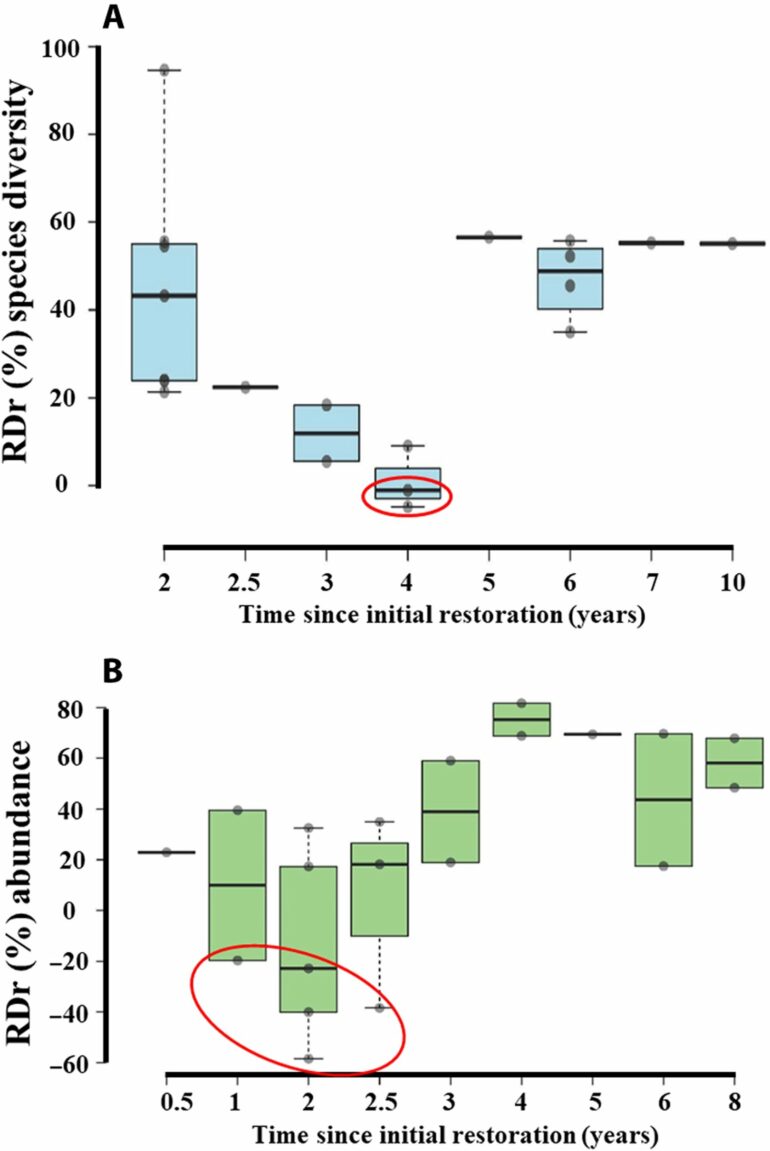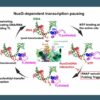Global assessments of historical oyster reef distribution have estimated that over 85% of oyster reefs have been lost to overfishing and coastal development. In recent decades, enormous effort has been put into developing and implementing different methods for restoring oyster reefs globally.
However, the overall effectiveness of these efforts has remained uncertain because of a lack of assessment of how long it takes for restored oyster reefs to begin to support marine biodiversity and provide ecosystem services to the same level of undamaged reefs.
Dr. Bayden Russell and Dr. Ashley Hemraj from the Swire Institute of Marine Science (SWIMS), and the School of Biological Sciences, The University of Hong Kong (HKU), along with their international collaborators, utilized an assessment method (recovery debt) to examine the effectiveness global oyster reef restoration to date.
They screened over 70 journal articles which compared restored oyster reefs to surviving natural oyster reefs in an attempt to benchmark what constitutes successful recovery of oyster reefs and identify the most successful methods of oyster reef restoration. The research has recently been published in Science Advances.
Their findings revealed that oyster reef restoration initiates a rapid increase in biodiversity and abundance of reef-associated species within two years; however, the recovery rate then decreases substantially, leaving a global shortfall in recovery of 35% below a pre-disturbed state.
Following this initial “boost” in recovery, the shortfall in species diversity, ecosystem functions and services will likely be gradually overcome by the development of ecosystem complexity. Therefore, while these young, restored reefs rapidly enhance biodiversity, they will require long-term protection to mature into complex ecosystems and recoup historical losses of biodiversity and ecosystem services.
“The rapid increase of oysters and fauna on restored oyster reefs is very promising and shows great return for the financial investment and effort put towards restoration. However, it is also clear that newly restored oyster reefs require time to develop into self-sustaining ecosystems, equivalent to remnant oyster reefs. By reducing disturbances to these restored reefs, in particular activities like harvesting or development which damage the reef, we can help them recover faster,” said Dr. Ashley Hemraj, the lead author of the study.
Importantly, the research also demonstrated that some of the most simple and cheap restoration techniques—the use of limestone rock as the base for restoring reefs—can be as effective as more costly techniques.
“The exciting thing about this research is that it consolidates the outcomes of global efforts in oyster reef restoration and provides some direction for maximizing success,” said the group leader Dr. Bayden Russell. “We were pleasantly surprised by how rapidly biodiversity increases in the early years after restoration, including recreational and commercially fished species, which provides good motivation and justification for rapidly expanding restoration in regions of the world where restoration programs are still in the early stages of development,” Dr. Bayden Russell added.
With the recognition that restoration of coastal marine ecosystems is a key component of protecting biodiversity and maintaining the services they provide to humans, this research offers timely direction for achieving these goals with oyster reef restoration.
More information:
Deevesh A. Hemraj et al, Oyster reef restoration fails to recoup global historic ecosystem losses despite substantial biodiversity gain, Science Advances (2022). DOI: 10.1126/sciadv.abp8747
Provided by
The University of Hong Kong
Citation:
Oyster reef restoration rapidly increases marine biodiversity: Study (2022, November 25)



